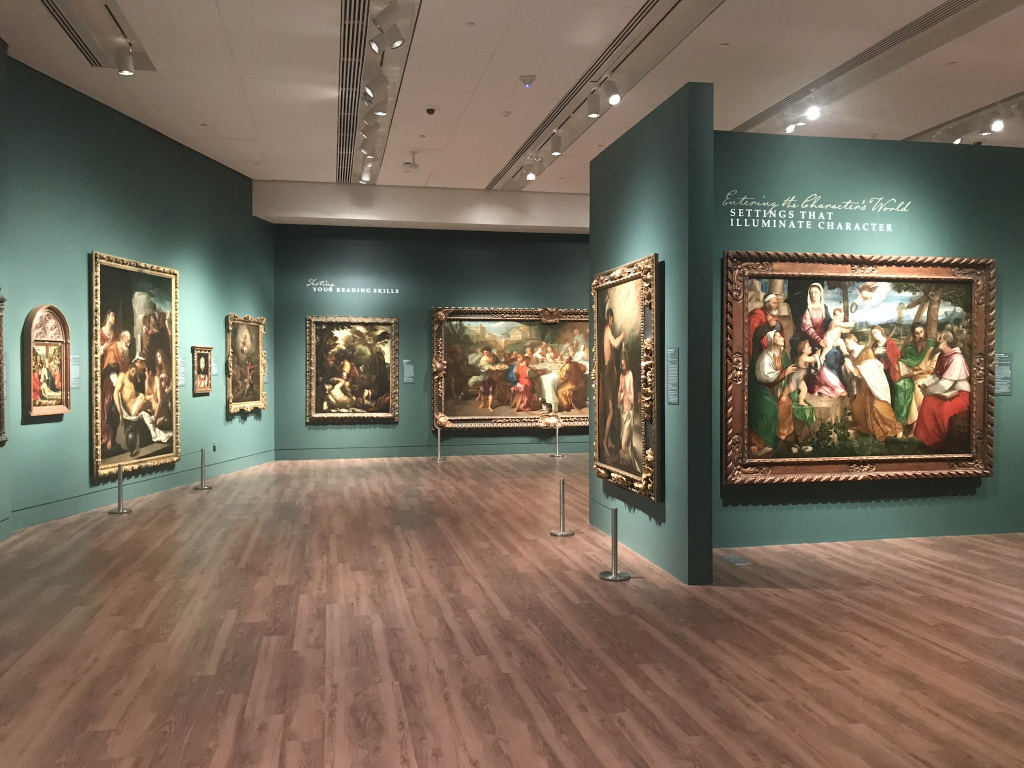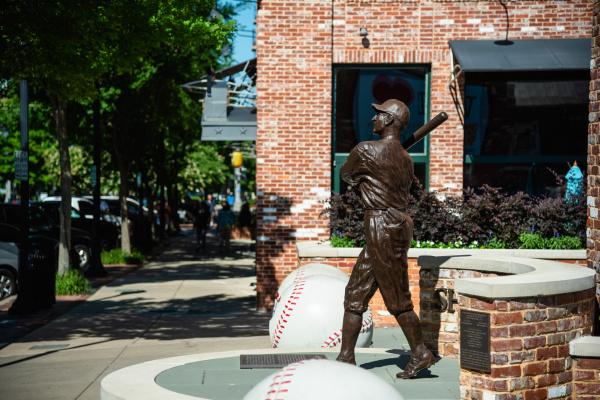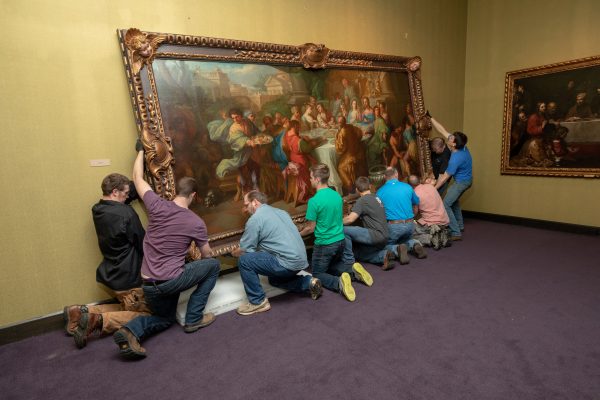Since its first exhibit almost 70 years ago, the Museum & Gallery at Bob Jones University has shone the light of Scripture through art. Even after closing its doors to the public in 2017, M&G has loaned paintings to museums as close as the Greenville County Museum of Art and as far away as Japan. Loaning art pieces allows M&G to continue transforming lives through fine art but also to keep its reputation alive and before the public.
See Also: Museum & Gallery on the Move
After two years of preparation, Picture Books of the Past: Reading an Old Master Painting—M&G’s largest exhibit loan yet—is displayed at the Museum of the Bible in Washington, D.C.
The Proposal
In 2017, the M&G staff recognized how the Collection could complement the Museum of the Bible. This District of Columbia museum owns an extensive collection of Scripture which narrates the importance and history of Bible preservation. The collaboration works because “we literally have the pictures from Scripture,” said Erin Jones, executive director of M&G.
During the Middle Ages, most of the population could not read and relied on the church for instruction. Sacred paintings taught the illiterate about Scripture. Jones compared the situation to how children use picture books to identify objects. She states, “The language of art was standardized across the centuries, across countries, languages, all borders so that no matter where you lived, at whatever time, you could look at a picture and read and understand it without having to know the language or being from the time when the artist made it.” Sacred artwork is full of symbols that inspire viewers to theological and intellectual discussion.
The M&G staff proposed incorporating an exhibit of M&G’s sacred paintings in the Museum of the Bible. The display would “teach people today—who can read, who do have access to Scripture—how to view these works,” said Jones. With the support of staff and friends at the Museum of the Bible, including a BJU graduate and Liberty University graduate, the concept was approved and the arrangements for Picture Books of the Past commenced.
The Preparation
In 2018 the weeks-long preparation process began. Bill Brown, a conservator from the North Carolina Museum of Art in Raleigh and a friend of M&G, helped prepare the 64 chosen paintings for the trip. “(This) is the largest exhibit we’ve ever loaned. It’s always been at the most 20 (paintings), and then it was 40, but 64 is the biggest loan we’ve ever done,” said Jones.
M&G partnered with the Museum of the Bible for a company to create crates to carry each painting and transport them to Washington. The Collection staff made sure each piece was packed then loaded the two moving trucks. The Museum of the Bible received the paintings in November 2018 and stored them until the exhibit installation in August 2019.
Jones and Rebekah Cobb, M&G registrar, directed the installation. Jones and Donnalynn Hess, M&G’s director of education, curated the exhibit. Jones also worked with the Museum of the Bible’s designers while Hess wrote the exhibit’s accompanying content. Brown went as well to ensure the pieces remained in good condition after their journey. Meanwhile, the Museum of the Bible prepared the exhibit space by painting the walls and hiring an art handling company to install the works.
The Content
Picture Books of the Past is divided into three sections. Each focuses on understanding sacred art. Text panels paired with the paintings explain how to analyze individual pieces.
The first section introduces the characters in the paintings and their standard attributes, such as clothing or symbols. Artists made saints appear the same in every piece. “If you look the same every day, people recognize you. So that’s what they did,” said Jones. “The artists create … within their style, but Mary is generally going to wear blue and red and white.” Also, the apostle John is shown with an eagle.
The second section presents the character within their world. The artists become storytellers by placing each character in a narrative from Scripture. They visually communicate with the audience through techniques like perspective, light and shadow, and details like color symbolism, body language and even clothing style.
The third section explains creative techniques and methods, some of which are common to all types of art. Allegory, symbolism and allusion convey contexts outside of the frame which further the meaning within the painting.
Three icons, like small emoji, alongside each work of art reinforce the themes of the whole exhibit. “All the text is chunked … so that way you can pick and identify whatever it is you want to read further about,” said Jones. The magnifying glass represents the clues or the attributes that identify a character, a place or an idea. The book icon symbolizes the historical context in which the character appears. The eye indicates how the artist depicts the story and the characters in it.
Though far from campus, the Collection continues to show God’s truth through art. The exhibit is on display through Sept. 30, 2020. For more information and ticket prices visit the Museum of the Bible website.








